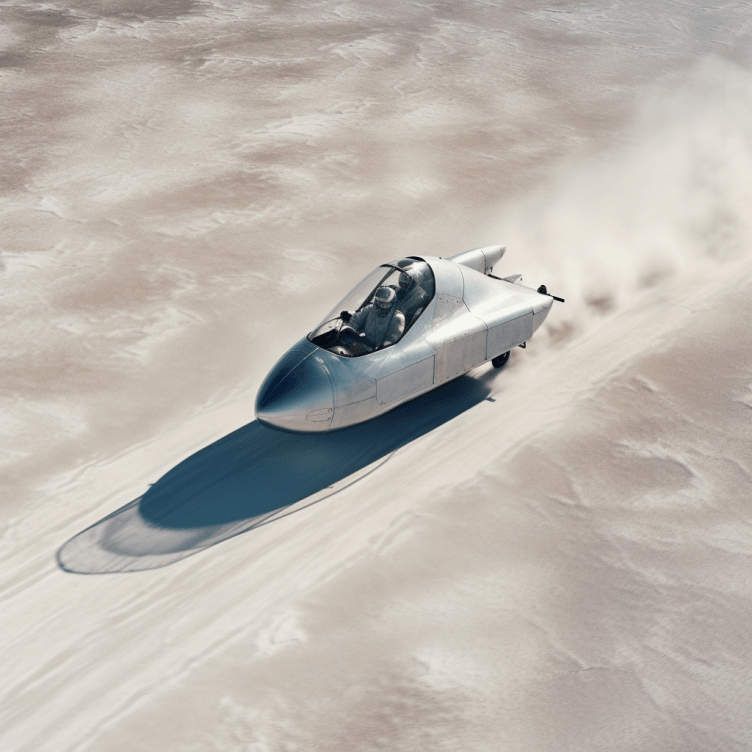Woomera, 5/26/38 T.A.D. – In the picturesque town of Woomera, Australia, an adrenaline-fueled sport has captivated audiences on the internet and drawn interest from engineers and designers. Welcome to G-Loading, the niche racing sport that combines human endurance, technological innovation, and intense competition.
G-Loaders launch themselves on small wheeled carts (called “gloads” by enthusiastic fans) by rolling through magnetic accelerators, bursting out at incredible speeds. In the most extreme cases – advanced versions controlled by fighter pilots and Formula 1 drivers – the craft can experience momentary g-forces in excess of 12 g.
“It’s more fun than an ejection seat!” laughed Wing Commander (Retd.) Henry Wooding, as I interviewed him on a simmering afternoon in Woomera. A Royal Australian Air Force reserve pilot, Wooding describes himself as a professional gloader.
The goal of the competition is to design and operate a vehicle that can travel the farthest distance under the provided force, making vehicle design and rider skill essential components of the sport.
“It’s an incredible mix of high-speed excitement and precision engineering,” he added. “But fans know the real tension is in the last moments of the race, as the vehicles slowly roll their last few inches. Records in this sport are often a matter of very small distances.”
Jaxon “Turbo” Mitchell, a 25-year-old up-and-comer in the sport from Sydney, describes the sensation of riding a gload during launch: “It’s like being shot out of a cannon, and then suddenly, it’s all about finesse and keeping your momentum. And if you’re not seated right, it can be a real pain in the ass.” Mitchell is joking, but serious too: he has broken his tailbone twice in rough, high-force launches.
The concept of G-Loading originated from a group of engineers and adrenaline addicts who first experimented with magnetic launch systems near the vast Lake Hart salt flat in Australia. The vehicles are strictly analog and incorporate ferromagnetic strips to interact with the magnetic launch system, while the rest of the vehicle is made from non-magnetic materials like wood, fiberglass, and composites; often with garish paint jobs.
That analog aspect – designing vehicles that don’t use electronic controls and readouts – attracts many DIY-ers to the sport. Bill Glenly works on his homemade gload with his daughter Leticia. “The rookie league only goes up to 5 gs, so it’s safe. The satisfaction is in building the gload. Working the wood, crafting with your hands; shaping it just so to push the gload down at high speeds and keep it on the ground, but provide lift at lower speeds to prolong the roll. Quite a bit of sophistication goes into these little rockets.”
“The beauty of G-Loading is that every little detail matters,” agrees NASA engineer Alan Levitsky, who avidly follows trends in gload construction. “From the shape of the vehicle to the materials used, a well-designed gload is a marvel of engineering, balancing aerodynamics and rider skill.”
The sport is expected to evolve and expand, with new classes and challenges emerging. The future of high-speed racing is here, and it’s called G-Loading. Buckle up and grab your g-suit.
Reporting for Future News, this is Lila Donovan in Woomera.
